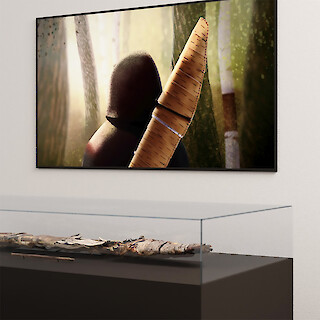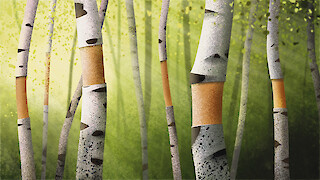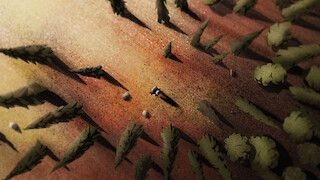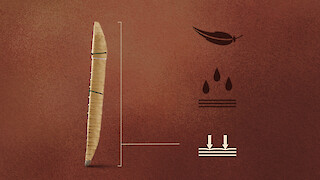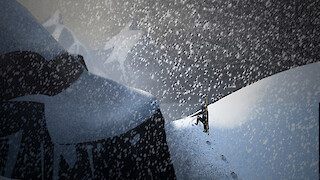Archaeological finds can sometimes seem unspectacular, but provide a wealth of potential insights. In 2003 at the Schnidejoch pass in the Bernese Alps, a bow-sheath made of birch bark was discovered – a unique find in the world to this day. Lucy Kägi has developed an animation for the Historical Museum Bern, as a medium of communication to accompany and complement the find in the planned exhibition and provide access to a mysterious object. With a poetic and visual language that is unconventional in a museum context, skilfully composed scenes and an intriguing narrative level, Lucy Kägi draws in viewers of all ages and makes them want to learn more about this artefact and its story. At the same time, she conveys information about the material and its production in a simple way and with lasting effect.
With this project, Lucy Kägi has delivered an innovative and independent definition of the communicative requirements of «scientainment». Very elegantly, she combines the captivating narrative interpretation of the hypothesis with an exemplary didactic reduction which not only avoids a school-masterly attitude but instead creates a sensual access to an often dry subject matter. She thus introduces a fresh way to impart knowledge to the field of archaeological research. The clear, universally comprehensible visual language with its deliberately reductive approach leaves room for personal interpretations and supports archaeology as a science whose artefacts are based on hypothesis to a considerable extent. The visual language is complemented to great effect by the sound design created in collaboration with two ZHdK students specialising in composition for films. The design self-assuredly avoids the reproduction of clichés of characters and outdated conventions.
This work provides a medium which complements scientific facts and existing concepts of knowledge communication. For the design excellence and care which is evident in every step of the creation process and has also been comprehensively documented, we nominate Lucy Kägi for the award grant.
